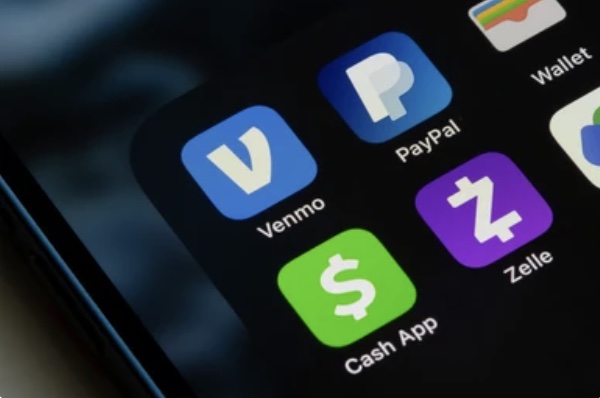In an era dominated by digital transactions and instant payments, peer-to-peer (P2P) payment services have emerged as convenient tools for transferring funds. Many of us use these services to split dinners with friends, buy coffee, send funds to loved ones for special occasions, or pay for just about anything that accepts them. Although the convenience is apparent, it comes with a dark side – the heightened risk of scams and fraud. As P2P payment systems gain even more popularity, fraudsters actively target users, taking advantage of loopholes and the lack of robust fraud protections inherent in traditional banks and credit cards.
The Rising Tide of Scams and Fraud
As P2P payment platforms have become increasingly mainstream, the potential for scams and fraud has spread. Fraudsters adeptly exploit the vulnerabilities of these services, leading to a surge in unauthorized transactions and scams, including phishing, ‘accidental’ transfers, impersonation, and overpayment schemes. The lack of built-in fraud protections amplifies the attractiveness of P2P platforms to scammers, as once money is transferred, there is often no recourse for the victim.
The Perils of Limited Fraud Protections
One of the inherent risks associated with P2P payment apps is the lack of standard fraud protections in traditional financial institutions. Unlike banks and credit cards that offer safeguards to detect and limit errors, unauthorized transactions, or fraud, P2P transfers often lack these built-in protections. This absence leaves users vulnerable to a range of scams, putting their hard-earned money at significant risk.
Things are starting to shift, as Zelle recently began a process of refunding money to victims of fraud that occurred through its popular P2P service. This comes as the portal enjoys increased consumer use and an uptick in fraud. Since lawmakers began pressuring the many banks and other financial institutions that use Zelle to safeguard consumers better, policies related to fraud started to shift. It’s a welcome sign for consumers and bodes well for the future of once-limited fraud protections in the world of P2P payments.
Common P2P Payment Scams Unveiled
Understanding the specific scams prevalent in P2P payment services is crucial for users aiming to navigate these digital landscapes safely. Here are a few of the most common ones to be on the lookout for:
- Imposter scams: Scammers pose as someone trustworthy, such as an IT specialist or family member, to convince a payer to send them money.
- Romance scams: Fraudsters trick users into sending money for a non-existent investment scheme, promising unrealistic high returns and the possibility of romance to entice the victim to part with their funds.
- Fake Product or Service Purchase Scams: Scammers pose as legitimate sellers, showcase appealing products or services, and request payment via a P2P app. After the transfer, they disappear, leaving the victim without the purchased item or service.
- Unauthorized Money Transfers: Scammers may “accidentally” send money on a P2P service and ask the recipient to return the money back. This is a scam to get personal financial details or money outright.
Mitigating Risks: A User’s Responsibility
These scams highlight the need for caution and vigilance when using P2P payment services. Users should be aware of these common scams and take steps to protect themselves, such as only sending money to trusted individuals, double-checking all details before making a transaction, and having identity restoration services in place.
Users must adopt a vigilant and cautious approach to further mitigate the risks associated with P2P payment services. Recognizing and trusting the parties involved and staying informed about the fraud protection policies of the P2P payment app in use are critical steps. Additionally, users should stay updated on the common scams and take immediate action if suspicious activity is detected.
Building a Secure Ecosystem
A collaborative effort between users, service providers, and regulatory bodies is essential to build a secure P2P payment ecosystem. Transparent reporting mechanisms for suspicious activities, swift resolution processes for fraud-related incidents, and open communication channels between users and platform providers can create an environment where scams are swiftly identified and mitigated.
The recent news related to Zelle mentioned earlier is a good example of the foundation for the emergence of a more secure ecosystem. Increased awareness on all sides will foster the building blocks for this as P2P systems continue to grow.
Looking Ahead: Innovation and Security Hand and Hand
As technology advances, so does the potential for innovation in the P2P payment space. However, this progress must go hand in hand with enhanced security measures. The integration of artificial intelligence and machine learning algorithms can bolster fraud detection capabilities, identifying patterns indicative of scams and enabling proactive prevention.
Old-school fraud prevention tactics are also in play here, such as never revealing your personal information to unknown or untrusted people and avoiding any suspicious behavior or activity within whatever P2P payment portal you use. Increased awareness is also innovation from a consumer protection perspective. As always, having fraud protection and restoration services in place can help victims better deal with an incident when it does occur.
Final Thoughts
While P2P payment portals offer unparalleled convenience, the risks associated with scams and fraud necessitate a collective and proactive approach. Users must remain vigilant, educate themselves on emerging threats, and adopt secure practices, while service providers must prioritize user education and continually enhance security measures. By fostering a shared commitment to security, the P2P payment landscape can evolve into a trustworthy and resilient ecosystem where users can transact with confidence.
LibertyID provides expert, full-service, fully managed identity theft restoration to individuals, couples, extended families* and businesses. LibertyID has a 100% success rate in resolving all forms of identity fraud on behalf of our subscribers.
*LibertyID defines an extended family as you, your spouse/partner, your parents and parents-in-law, and your children under the age of 25.

